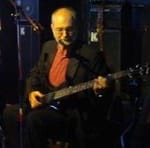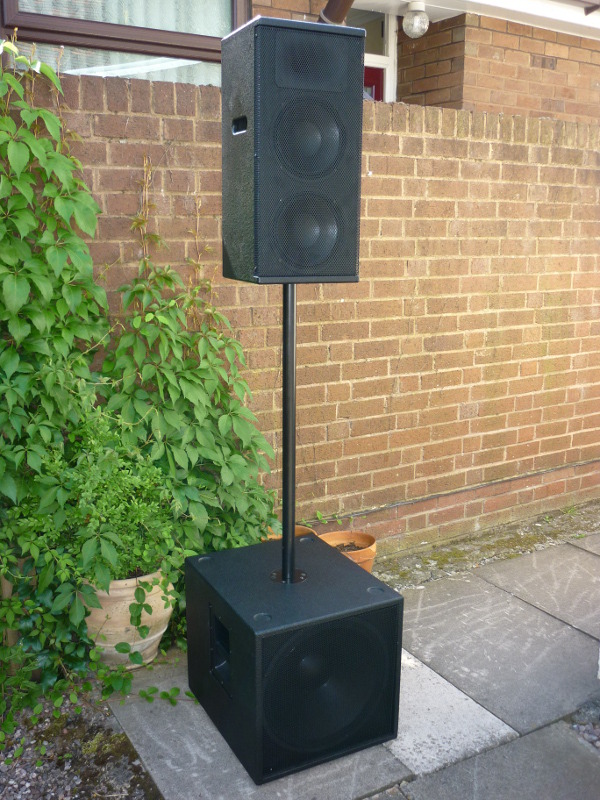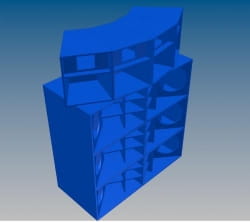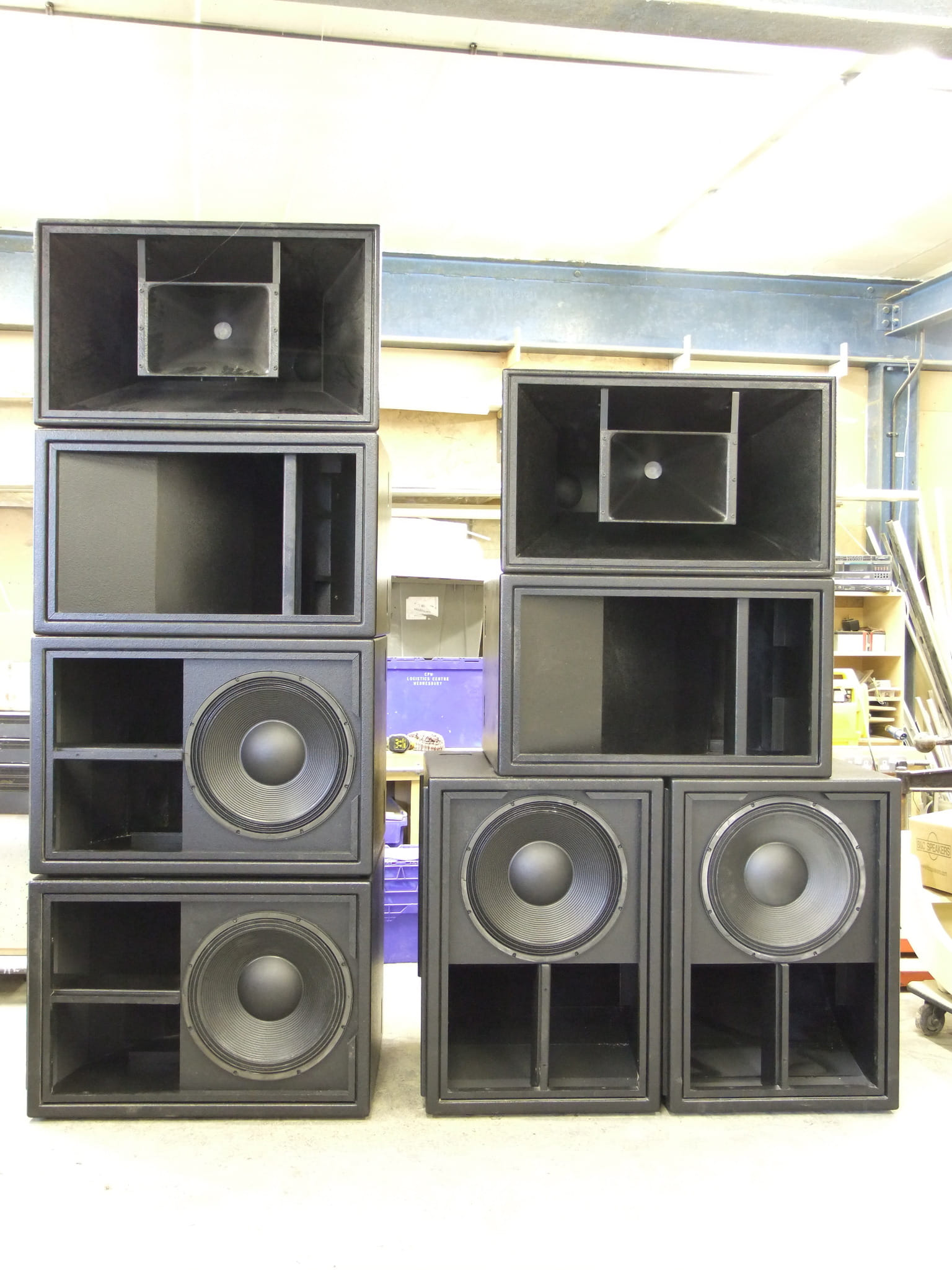- Posts: 142
- Thank you received: 5
Unity Horns /Why they work / Potential Patent Challenges /
- bjm362
-
 Topic Author
Topic Author
- Offline
- Premium Member
-

I AM NOT AN ATTORNEY,NOR AM I GIVING LEGAL ADVICE. This is a statement of oppinion!
You guys may think I am nuts,and in some ways you are probably right. However the fact remains that Unity horns are not only not as unique as one might think at first glance,but that the patent for them is smoke and mirrors at best!
Don't get me wrong,I do respect the excelent work done in implementing this particular manifold loaded horn including the detailed time alignment efforts. Although I OWNED some OLD speakers based on the same concepts some 20+ years ago,they were not as detailed an effort as his.
BTW,the commercially available units do not load the horns in the midrange as thoroughly as the original design. Thats Yorkvilles fault not Mr Delaney's !
I first became interested in Unity Horns while viewing some basics on horn designs on Wikipedia.
Upon viewing the design I was immediately reminded of a manifold loaded HF horn I wanted to build in the early 90s.
One of the goals of my manifold was a bit different,but the primary goal of the unity horn was ALSO taken into consideration, and was already a LONGSTANDING STANDARD consideration in speaker designs.time alignment!
In fact the Unity Horn uses the OLDEST method of time alignment correction known to man! Physically moving the hi frequency drivers back.
I know this sounds oversimplified,but it isn't! In fact I read numerous threads on numerous forums including this one where it was stated that no one understood the math behind the Unity Horns.
Here it is in a nutshell. One of the first things you learn studing the design of loudspeakers is that the speed of sound is NOT constant ! It varies accordinng to the DENSITY of the medium AND the FREQUENCY of the signal! Higher frequencies travel faster than low frequencies. Low frequency horns typically require more length than high frequency horns which in turn creates a time alignment conundrum.
Most loudspeaker designers currently resolve this issue by creating some delay for the top end in the crossover network.An inferior solution in my opinion,but it works!
If you want to buy some Yorkville Unity horns, by all means enjoy, it is a fine product!
If you want better Unity Horns use Delaney's original plans and build them yourself!
If you want superior Unity Horns I have some alternative driver sugestions that can be adapted to Delaney's plans!
Please Log in or Create an account to join the conversation.
- Tony Wilkes
-

- Offline
- Elite Member
-

- Posts: 273
- Thank you received: 3
Please Log in or Create an account to join the conversation.
- heathrow_b_line
-

- Offline
- Platinum Member
-

- Posts: 397
- Thank you received: 0
or know where I can view them?
Produce a killer sound. Take no prisoners.
Please Log in or Create an account to join the conversation.
- nickyburnell
-

- Offline
- Platinum Member
-

- Posts: 802
- Thank you received: 0
bjm362 wrote: LEGAL DISCLAIMER !
Here it is in a nutshell. One of the first things you learn studing the design of loudspeakers is that the speed of sound is NOT constant ! It varies accordinng to the DENSITY of the medium AND the FREQUENCY of the signal! Higher frequencies travel faster than low frequencies. Low frequency horns typically require more length than high frequency horns which in turn creates a time alignment conundrum.
!
Well that shoots down the whole, "throw doesn't exist" nonsense on the other forum ages ago then.
The speed of sound is constant was the argument of the non believers.
Sorry off subject
Please Log in or Create an account to join the conversation.
- tony.a.s.s.
-

- Offline
- Moderator
-

- Posts: 1344
- Thank you received: 12
Fortunately, I don't concern myself with such things, because I have a machine that does it all for me.
Peace and goodwill to all speaker builders
Please Log in or Create an account to join the conversation.
- bee
-

- Offline
- Platinum Member
-

- Posts: 2090
- Thank you received: 34
Please Log in or Create an account to join the conversation.
- bjm362
-
 Topic Author
Topic Author
- Offline
- Premium Member
-

- Posts: 142
- Thank you received: 5
I have absolutely no idea what you are talking about,but I didn't want you to feel left out in my responses !Tony Wilkes wrote: Probably took his eye of the ball when he was looking after his donkey or was it his motor car. !!!
Have a great Day !
I don't have the plans, but there is a pretty good example on wikipedia!Heathrow_B_Line wrote: I would like to build some unity horns, do you have the plans?
or know where I can view them?
en.wikipedia.org/wiki/File:Multiple_entry_horn.png
Tony.A.S.S. wrote: Is there any written proof that when it comes to the speed of sound, HF travels faster than LF? At the moment I can't see knock on effect of air molecules being faster for HF than LF. Admittedly, bass waves are longer than HF, but that doesn't mean the speed is different.
Not only is there proof that the speed of sound isn't constant Tony, it has also been proven that due to the effects of gravity the speed of light isn't constant !
If you get right down to there are only two constants in the universe ............... God and Change !!!
Yes there can be confusion if a system is poorly aligned,remember That stereoscopic sound creates 3 dimensional auditory imagery.Tony.A.S.S. wrote: Is there confusion because bass seems slower in response than HF? To me, this is mechanical limitations rather than a slower knock on effect. While we're on the subject, When it comes to time alignment, in the bass for instance, where do you think the alignment point is for a frequency that is 30ft long. Is it in the front, middle or back. Answers on a postcard please.
Fortunately, I don't concern myself with such things, because I have a machine that does it all for me.
Thats very unfortunate that you don't concern yourself with something that can make a tremendous difference in the detail of an auditory image,but hey its your life live it how you want to !
bee wrote: if it is 30ft long would you not measure it at 30 feet.......... just a guess..... on another point if sound travels at differant speeds then you could never fully time align a system....... unless you align it to x point..... but if you stand 1 foot back from x point it would be back out of align again...... just a theory......
Very astute observation Bee !! A few decades back when I was actually fairly studied up on the subject time alignment was either done by aligning the driver plane (either physically or with delay) or by aligning to point X (also either physically or with delay).
If I recall correctly one of the methods is called Thiele alignment and is named for the same guy as Thiele small parameters!
What makes the unity horns unusual is that are in a physical point x alignment, most loudspeaker are electronic point x alignment or physical driver plane or electronc driver plane. All frequencies are in correct alignment at the front of the horn!
BTW there are still in and out of phase situations at varying distances, but they are natural and correct so you maintain imagery.
Please Log in or Create an account to join the conversation.
- bee
-

- Offline
- Platinum Member
-

- Posts: 2090
- Thank you received: 34
Please Log in or Create an account to join the conversation.
- tony.a.s.s.
-

- Offline
- Moderator
-

- Posts: 1344
- Thank you received: 12
Two things from above. I didn't say the speed of sound was constant, I was questioning whether different frequencies from the same source would travel at different times what ever the atmospheric conditions were, as referred to earlier. Also I concern myself very much to all things relating to the propagation of sound, which is why I paid a lot of money for the machine that measures such things. My Iasys machine sorts out such anomalies.
Peace and goodwill to all speaker builders
Please Log in or Create an account to join the conversation.
- tony.a.s.s.
-

- Offline
- Moderator
-

- Posts: 1344
- Thank you received: 12
Peace and goodwill to all speaker builders
Please Log in or Create an account to join the conversation.